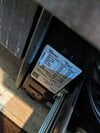Hello everyone,
I'm planning to install a Tesla Wall Charger (48A) at my home. My main breaker is 125A. Got a few quotes from various electricians and they all came back to me with various prices and solutions. I'm hoping you could help me out:
It's a bit wild to me that each electrician company comes up with different solutions. I was expecting they all have a similar scope of work, just different prices.
I did some load calculation myself based on this guide - How Much Electricity Do I Need for My Home? and got 93.8A without the Charger, and 117A with the charger included. I talked with the Electrician 1 and he told me he did optimal calculation method at first, but said that per code - for 125A supply, if the load result is below 100A, they can't use it. So he opt for a standard method (using sq footage of the house *3 and some other numbers). Also said that if I don't want to use the Neurio kit, they can do it without, and it will pass inspection, just that the kit option would be a better and safer choice
Who would you go with in this case? For the record, I don't really use my oven (40A breaker), maybe 1-2 times a year and I'm planning to only charge from 12am - 6am, so no dryer running as well. My stove and heat are gas. I'm wondering if I really do need a meter or load balancing unit for my use case. Should I be worry about only 4A buffer between my load and the supply? or am i worrying over nothing here? Anyone with a 125A main panel can help shed some light here?
I'm located in WA, US if that helps
tl;dr: main panel is 125A, full load calculaton is 117-121A, will i be ok?
I'm planning to install a Tesla Wall Charger (48A) at my home. My main breaker is 125A. Got a few quotes from various electricians and they all came back to me with various prices and solutions. I'm hoping you could help me out:
- Electrician 1 (who I'm leaning toward to): say my full house load including the EV is 121A, which comes a little too close to 125A. To install just a charger is around $1000, but they strongly suggest adding a Tesla Neurio Kit, which is a load monitoring/meter that can communicate to the charger to lower its output as needed. The total quote is $1800
- Electrician 2: says my full load is well below my main supply, can do it for $1056. Haven't heard back since I request the load calculation
- Electrician 3: Installation is $1000, but says they need to install a DCC Load Balancing unit ($1500) to "acquire full 60A charging" and pass inspection, total is about $2500
- Electrician 4: Need to install a "125a smart switch" next to the breaker panel, then feed the smart switch with 2-pole 60A breaker then to the charger. Says they need this to pass inspection. Quote is $2000
It's a bit wild to me that each electrician company comes up with different solutions. I was expecting they all have a similar scope of work, just different prices.
I did some load calculation myself based on this guide - How Much Electricity Do I Need for My Home? and got 93.8A without the Charger, and 117A with the charger included. I talked with the Electrician 1 and he told me he did optimal calculation method at first, but said that per code - for 125A supply, if the load result is below 100A, they can't use it. So he opt for a standard method (using sq footage of the house *3 and some other numbers). Also said that if I don't want to use the Neurio kit, they can do it without, and it will pass inspection, just that the kit option would be a better and safer choice
Who would you go with in this case? For the record, I don't really use my oven (40A breaker), maybe 1-2 times a year and I'm planning to only charge from 12am - 6am, so no dryer running as well. My stove and heat are gas. I'm wondering if I really do need a meter or load balancing unit for my use case. Should I be worry about only 4A buffer between my load and the supply? or am i worrying over nothing here? Anyone with a 125A main panel can help shed some light here?
I'm located in WA, US if that helps
tl;dr: main panel is 125A, full load calculaton is 117-121A, will i be ok?



